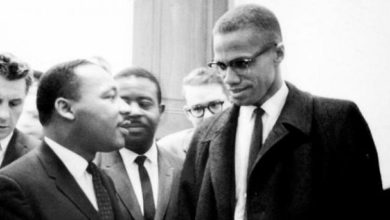Guidelines to Using Inclusive Language in the Workplace

 More and more people in the UK embrace and celebrate inclusivity and diversity, but even with the best of intentions, many of us have biases without even realising it. Good people management means valuing and supporting diversity in the organisation and creating an inclusive environment. UK legislation covers age, disability, race, religion, sex and sexual orientation among others. It sets minimum standards, but an effective inclusion and diversity strategy goes beyond legal compliance and looks to add value to an organisation by contributing to employee wellbeing and engagement.
More and more people in the UK embrace and celebrate inclusivity and diversity, but even with the best of intentions, many of us have biases without even realising it. Good people management means valuing and supporting diversity in the organisation and creating an inclusive environment. UK legislation covers age, disability, race, religion, sex and sexual orientation among others. It sets minimum standards, but an effective inclusion and diversity strategy goes beyond legal compliance and looks to add value to an organisation by contributing to employee wellbeing and engagement.
A Sense of Belonging in the Workplace
Language gives us the ability to communicate thoughts, ideas and feelings with others. It helps us to forge relationships and create connections, but conversely, it can create barriers and impact someone’s sense of belonging. When an employee feels like they belong, there will be greater retention which in turn can give higher customer satisfaction.
Everyone needs to feel accepted, included and listened to: a sense of belonging encourages employees to excel in their roles and connect with the company. The meaning of words in the English language are regularly changing. Now, words people used when describing peoples’ ethnic origins or sexual orientation are outdated and can now cause offence. It can be easy to make a mistake and education and training in respect of diversity and inclusion is vital.
Talking About Age
Be mindful when referring to age, as both younger and older people may see their age as a barrier to being included in the workplace. Avoiding terms and phrases that may stereotype individuals or groups on the basis of their age. Steer clear of terms, such as “mature” workforce and “young and vibrant team” and instead use objective terms, such as “experienced” workforce and “effective and vibrant” team.
Language and Disability
Don’t define a person or group according to their conditions or disabilities, instead, use language that focuses on their abilities, rather than their limitations. Use terms, such as disabled person rather handicapped or person with a disability rather than wheelchair bound.
Mental Health
Everyone has mental health that is influenced by our genes, life experiences, upbringing and environment. Those factors influence how we think and respond to situations.
Within the workplace we should sensitively use person-centred language to avoid positive or negative labelling. We do not describe people as mentally ill or defined by a condition, instead say:
- Mental health conditions
- A person with a mental health condition
- Mental health problems
- A person with anxiety
- People with depression
Race and Ethnicity
Race is regarded as a category of humankind that shares certain distinctive physical traits, particularly skin colour, and a shared ancestry or historical experience.
‘Ethnicity’ is more frequently chosen by the individual and linked to cultural expression. The term is used to describe shared cultural or national identity, such as language, nationality, religious expression and other customs.
Only refer to people’s race or ethnicity if it’s relevant to the situation. In those cases it’s recommended to use the following:
- Broad ethnicity: Black, Asian and White – rather than Caucasian
- Specific ethnicity: Black African, Chinese, Indian , White British
- ‘Minority ethnic group’, rather than ‘minority group’
BAME is used as an acronym for Black, Asian and Minority Ethnic, used to refer to all ethnic groups who do not consider themselves to be White.
However, the acronym can be problematic as it isn’t specific to which ethnic minorities are included. Some BAME references mean all minority ethnic, including White Gypsy, Roma and Irish Traveller groups, while others include White ethnic minorities in the ‘White’ category.
The use of ‘BAME’ can assume that all non-White people exist as a single group without appreciation of the uniqueness of individual ethncities. So, instead, be as specific as possible when referring to a specific person or group of people.
Sex and Gender Identity
It is important to understand the difference between the language around sex and gender identity which is continually evolving.
‘Sex’ is a biological term which refers to male, female or intersex and relates to genes, reproductive organs and hormones inherited at birth.
‘Gender’ can be fixed or fluid and refers to a sense of who we are and how we identify. Some people identify with a gender opposite to that assigned to them as a child (trans) and others identify neither as men nor women (non-binary or genderfluid).
Most roles don’t need to be gender-defined, for example:
- Chair, not chairman
- Scientist or lecturer, rather than female scientist or male lecturer
- Fire officer, not fireman/fire woman
- Spokesperson, not spokesman
- Cabin crew, not air steward/stewardess
Sexual Orientation
Use the term ‘sexual orientation’, not ‘sexual preference’ when talking about sexuality and only when it is relevant to the context. For example, recruitment drives designed to broaden applications from individuals belonging to sexual or gender minorities, for example lesbian, gay or any orientations a person may identify with.
Language Used Around Religion
It’s incorrect to assume people whose ethnicity originates from specific countries observe the same religion or any religion. Additionally, a person’s religious belief can’t be assumed by their name. Only refer to people’s religion if it’s relevant to the information being communicated, in which case use the following:
- First name, forename or given name, not Christian name
- Names of religions and religious groups have an upper case
- Groups of individuals from the same religion should be referred to as a community, such as Jewish people or members of the Muslim community.
Respect in the Workplace
Whenever there is any doubt in how to address someone or what pronouns to use (or whether they want to use pronouns), ask their preference and respect their wishes. If you have any issues with inclusive language in the workplace you could get in touch with a law firm that specialises in employment discrimination.
With effort to keep these day-to-day guidelines in mind, managers and employees can reinforce inclusive language that supports diversity and inclusion in the workplace.
For any important information please contact us Email GadgetsNg info@gadgetsng.com
[Button id="1"]




You have noted very interesting details! ps decent web site.cricfree
It’s nice to see the best quality content from such sites.Live TV
lso thank you for allowing me to comment!.-vox im internet gucken
Wonderful post! We will be linking to this great article on our site.Qizfun Busy Board Montessori Toy for 1 2 3 4 Years Old Educational Activity Sensory Board Preschool Learning Fine Motor Skills Toys Toddler Travel Toy for Plane Car Gift for Boys Girls (Blue/P4) – Hot Deals
Some really excellent info Sword lily I detected this. – hey dudes near me
o great to find someone with some original thoughts on this topic. black on cloud womens shoes
Appreciate the useful information
Some really excellent info I look forward to the continuation.